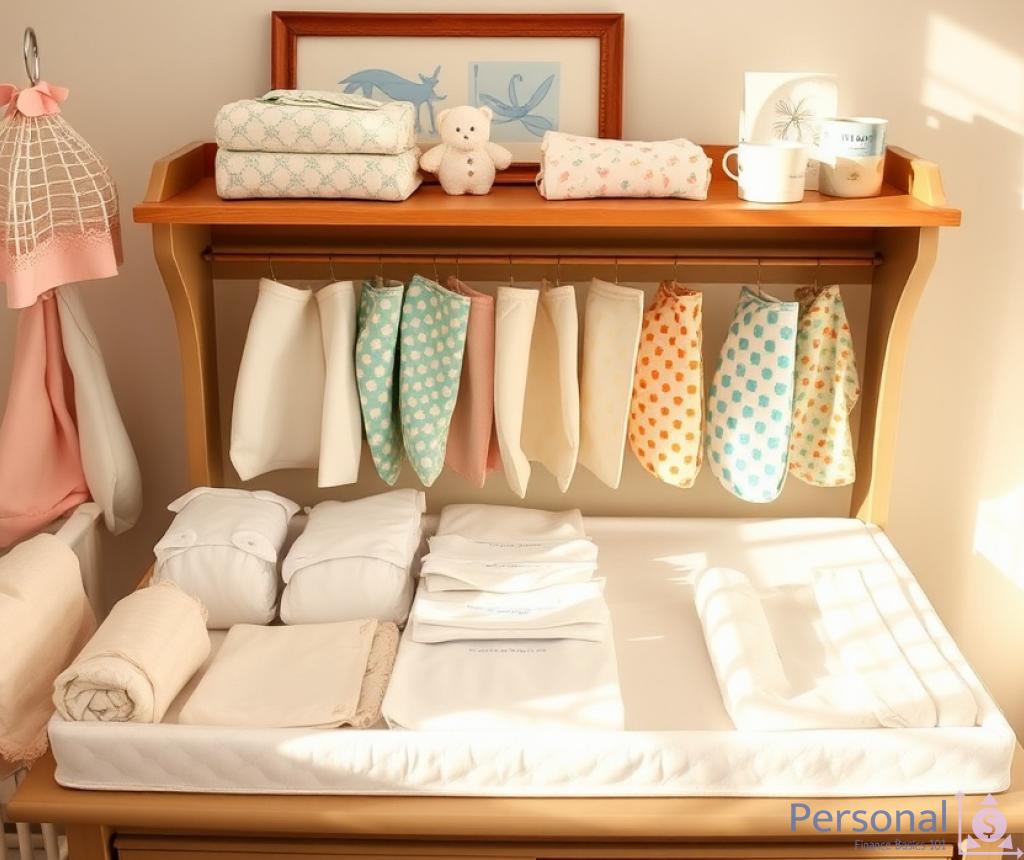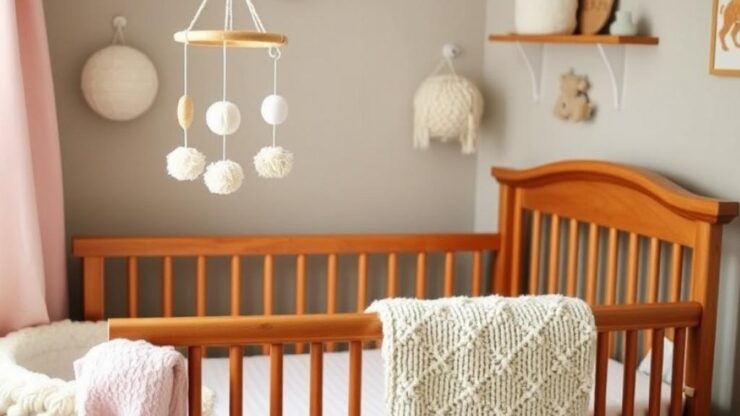Cost-Effective Diaper Alternatives

As new parents, the financial burden of raising a child can be overwhelming. One of the most significant ongoing expenses is diapers. Fortunately, there are several cost-effective alternatives that not only save money but also contribute to sustainability. This article delves into various diaper alternatives that can ease your budget while ensuring your baby stays comfortable and dry.
Cloth diapers have made a remarkable comeback in recent years, becoming a preferred choice for eco-conscious parents. Unlike disposable diapers, which can take hundreds of years to decompose, cloth diapers are reusable and can be washed and used multiple times. They come in various styles, including pre-folds, all-in-ones, and pocket diapers, offering flexibility and convenience.
Here is a comparison of different types of cloth diapers:
| Type | Cost | Pros | Cons |
|---|---|---|---|
| Pre-folds | $2 – $5 each | Inexpensive, easy to clean | Requires folding and pinning |
| All-in-ones | $15 – $30 each | Convenient, no assembly needed | Longer drying time |
| Pocket Diapers | $10 – $25 each | Customizable absorbency | Requires stuffing |
If cloth diapers are not your preference, consider creating your own disposable alternatives using household materials. For instance, you can use cut-up t-shirts, old towels, or even fabric scraps as makeshift diapers. By layering these materials, you can mimic the absorbency of traditional diapers while being frugal and environmentally friendly.
Additionally, many parents have found success with DIY diaper covers made from waterproof materials, such as PUL (polyurethane laminate) fabric. This approach not only saves money but also allows for a personalized touch to your baby’s diapering routine.
In conclusion, the journey of parenthood doesn’t have to come with a hefty price tag. By exploring cloth diaper options and engaging in creative DIY solutions, new parents can effectively manage diapering costs while being kind to the environment.
Homemade Baby Food Recipes

Creating nutritious homemade baby food is not only a cost-effective solution for new parents but also ensures that your little one is consuming fresh and wholesome ingredients. With the rising costs of pre-packaged baby food, many parents are turning to DIY options that allow them to control the quality and variety of their baby’s meals. This section will explore simple and delicious homemade baby food recipes that are easy to prepare and customize according to your baby’s tastes and nutritional needs.
Purees are a fantastic starting point for introducing solids to your baby. They offer a smooth texture that is easy for little ones to swallow. Here are a few easy recipes to get you started:
- Sweet Potato Puree: Steam or bake sweet potatoes until tender, then blend until smooth. Add water or breast milk for desired consistency.
- Carrot and Pea Puree: Cook carrots and peas until soft, then blend together. This colorful mix is packed with vitamins.
- Apple and Banana Mash: Stew apples until soft, then mash with ripe bananas for a naturally sweet treat.
Once your baby is accustomed to simple purees, you can begin to introduce flavor combinations. Mixing different fruits and vegetables can provide a range of nutrients and help develop your baby’s taste preferences. Consider the following combinations:
- Avocado and Pear: Blend ripe avocado with ripe pear for a creamy and nutritious meal.
- Spinach and Apple: Steam spinach and blend with sweet apple for an iron-rich dish.
- Butternut Squash and Quinoa: Cook butternut squash and blend with cooked quinoa for a protein-packed puree.
To save time and ensure you always have healthy options on hand, consider batch cooking. Prepare large quantities of your chosen recipes, then portion them into ice cube trays or small containers for convenient storage. This method allows you to quickly thaw individual portions as needed, making mealtime easier and more efficient. Remember to label containers with the date and ingredients to keep track of freshness.
DIY Nursery Decor on a Budget
Creating a warm and inviting nursery for your little one doesn’t have to drain your wallet. With a little creativity and some DIY skills, you can transform any space into a charming haven for your baby. This section explores how to achieve stunning nursery decor without overspending, ensuring that your baby’s first environment is both beautiful and budget-friendly.
One of the most effective ways to personalize your nursery is through wall art. Instead of purchasing expensive prints or decor, consider making your own. Gather materials such as canvases, paints, and stencils. You can create unique pieces featuring your baby’s name, meaningful quotes, or even abstract designs that reflect your family’s personality. Not only does this add a personal touch, but it also serves as a wonderful bonding activity as you prepare for your new arrival.
Another fantastic way to decorate on a budget is by repurposing existing furniture. Look around your home for pieces that can be transformed with a little paint or new upholstery. For instance, an old dresser can be turned into a changing table with a simple modification, or a vintage rocking chair can provide both charm and comfort. By giving new life to these items, you not only save money but also contribute to sustainable living practices.
Textiles play a crucial role in creating a cozy atmosphere in your nursery. Instead of purchasing expensive bedding and curtains, consider making your own. Choose soft fabrics that align with your nursery’s theme and use sewing patterns available online. Whether you opt for simple crib sheets or decorative throw pillows, customizing your textiles allows you to infuse your style while saving money. Moreover, you can easily wash and maintain these items, ensuring a clean environment for your baby.
Creating Safe and Affordable Baby Toys
As parents, the desire to provide engaging and safe toys for your little one can often come with a hefty price tag. However, embracing a DIY approach can not only save you money but also give you the peace of mind that comes with knowing exactly what materials are being used. This guide will explore various methods for crafting affordable toys that stimulate your baby’s imagination while ensuring their safety.
Natural Materials: The Heart of Safety
When it comes to creating toys, choosing natural materials is paramount. Organic cotton, untreated wood, and non-toxic paints are excellent choices that minimize exposure to harmful chemicals. For instance, you can easily transform simple wooden blocks into colorful building sets by using safe, water-based stains. This not only enhances the aesthetic appeal but also provides a tactile experience for your baby as they explore different textures. Additionally, fabric scraps can be sewn into soft toys, providing both comfort and safety for your child to cuddle with.
Creative Recycling: Turning Everyday Items into Playthings
Another fantastic way to craft toys is by using items you already have at home. Empty cardboard boxes can become imaginative playhouses or tunnels, encouraging your child’s creativity. Similarly, plastic containers can be repurposed into stacking toys or shakers by filling them with rice or beans and securely sealing them. This method not only promotes resourcefulness but also introduces your child to the concept of sustainability from an early age. It’s an excellent opportunity to teach them about reusing materials while keeping playtime fun and engaging.
Engaging Activities: Stimulating Development through Play
It’s important to consider the developmental benefits of the toys you create. Toys that encourage problem-solving and motor skills can be easily crafted at home. For example, you can create a simple sensory bag by filling a zippered plastic bag with hair gel, glitter, and small toys. This DIY activity promotes visual and tactile exploration, making it an ideal choice for infants. Similarly, you can make a fabric book by stitching together various textures and colors, providing a delightful experience as your baby learns to explore the world around them. By focusing on the educational value of your creations, you can ensure that playtime is both enjoyable and enriching.
Frugal Solutions for Baby Clothing
When it comes to dressing your little one, the expenses can quickly add up, especially considering how fast babies grow. However, savvy new parents can find ways to provide stylish and comfortable clothing for their infants without breaking the bank. This section delves into creative and economical solutions for baby clothing, ensuring your child is both fashionable and well-dressed while keeping your budget intact.
One of the most effective ways to save money on baby clothing is by upcycling and repurposing items from your own wardrobe or that of family and friends. Old t-shirts, dresses, and even jeans can be transformed into adorable outfits for your baby. Simple sewing skills can go a long way in creating unique clothing pieces that reflect your style while being eco-friendly.
Thrift stores and consignment shops are treasure troves for frugal parents looking for baby clothing. Many gently used items are available at a fraction of the original price, allowing you to stock up on a variety of outfits. Shopping second-hand not only helps you save money but also promotes sustainability, as you give new life to pre-loved clothing. To make your thrift shopping trip more fruitful, consider the following:
- Check for Quality: Look for items made from durable fabrics that can withstand frequent washes.
- Size Up: Babies grow quickly, so consider buying slightly larger sizes to extend the wear of each piece.
- Seasonal Shopping: Purchase off-season items at discounted prices, ensuring you have a wardrobe ready for your baby when the time comes.
- Mix and Match: Focus on versatile pieces that can be easily paired with various items, maximizing outfit combinations.
For those with a penchant for crafting, making your own baby clothing can be a rewarding endeavor. With an array of online tutorials and patterns available, you can create everything from simple onesies to cute dresses. Additionally, you can personalize each piece with unique fabrics, colors, and embellishments. This approach not only saves money but also allows you to design clothing that truly represents your family’s personality.
By embracing upcycling, thrift shopping, and crafting your own baby clothing, new parents can navigate the challenges of dressing their little ones while adhering to a budget. These frugal solutions not only ease financial pressures but also foster a sense of creativity and sustainability that can be passed down to future generations.
Disclaimer
This article has been created or edited with the support of artificial intelligence and is for informational purposes only. The information provided should not be considered investment advice. Please seek the support of a professional advisor before making any investment decisions.






